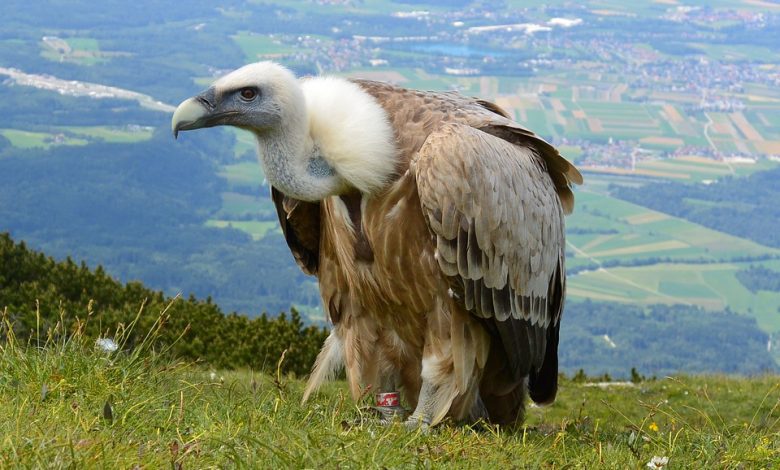

By Joachim Ng
The story of Ipoh is a nostalgic tale of human diversity and biodiversity once woven together, just as with other culturally, ethnically, and linguistically diverse settlements in Perak. We know from early 20th century anecdotes that the forests near towns were teeming with tigers, elephants, sun bears, mousedeer and other wild animals.
The towns were very small then in comparison with their populations now, and humans posed little threat to these animals until the economic boom spurring a continuous surge in numbers of people and expansion of town sizes. As farms and plantations spread, the forests were decimated to make way.
The Perak State Park Corporation has estimated that there are only 23 Malayan tigers left within the forest reserves of Royal Belum and Temenggor. Fifty years ago, there were still 3,000 tigers roaming freely in the jungles of Peninsular Malaysia.
A family of tigers may still be roaming the Bukit Kinta Forest Reserve, as one tiger was recently caught in a trap set by the Wildlife and National Parks Department after being sighted on several occasions in Kampung Ulu Kuang, Chemor.
Last December, a tiger was found roaming around Kampung Orang Asli Tonggang in Ulu Kinta possibly in search of food. In January 2023, a clouded leopard ventured out of the Tapah Forest Reserve and strode into Taman Bernam Baru in Tanjung Malim. A video recording showed glimpses of the leopard in front of a house.
Also last year a car travelling on the East-West Highway near Gerik slammed into a young elephant on the road, and five elephants in the herd then stepped on the car. Last month a Porsche owner in Terengganu crashed into an elephant, badly injuring one leg.
Wild creatures are stepping out of the forest habitats that they are losing due to human infrastructure development necessitating deforestation. Their habitats are shrinking too rapidly to support wildlife.
India has only 4,000 tigers left, down from 40,000 in 1947, and researchers have noticed that these remaining tigers are shifting their homes to high-altitude mountains to escape the warming climate and the ever-increasing human population.
Malaysia has also been ranked among the top 10 countries in the global illicit wildlife trade, with the culprits pocketing billions in revenue annually from sale of tiger parts, elephant tusks, rhino horns, bear biles, hornbill casques, turtle shells, pangolin scales, and other creatures to serve the high demand for exotic meats, traditional medicine ingredients, and decorative ornaments.
In just one month last year, pangolin scales worth RM6.5 million obtained from at least 3,000 dead pangolins in Malaysia were smuggled into Thailand en route to Laos for onward transmission. There is fear that pangolins in Sabah will go extinct because of illegal hunting for sale of their meat as an expensive delicacy and their scales for traditional medicine concoctions.
World Wide Fund for Nature in its Living Planet Report 2022 said that 69% of the wildlife populations of mammals, birds, amphibians, reptiles and fish have been wiped out by human activity. Wild mammals today account for only 4% of the total weight or biomass of mammals, with humans (34%) and livestock (62%) making up the rest.
You may ask what’s the issue — shouldn’t wild animals make way for humans and livestock that we need for protein? The issue is that biodiversity loss threatens human existence, and for the religiously minded, it is also a spiritual issue.
First, let’s get over the spiritual issue quickly and frankly. If humans exterminate all or most of the higher animal lifeforms, everyone will be implicated in the genocide for their failure to stop it. Can any person then go to heaven? God may be merciful but he is also just. For sure, the animals will go to heaven in recompense.
Now for the killer news: Scientists estimate that 100 to 10,000 species — from microscopic organisms to large plants and animals — go extinct each year. This is 100 to 1,000 times faster than the natural baseline extinction rate of one to five species per every one million species per year.
A 2019 report by the Intergovernmental Science-Policy Platform on Biodiversity and Ecosystem Services noted that up to one million plant and animal species are facing extinction due to human activities.
This mass extinction is occurring because half of the world’s land surface has been turned into human settlements and agricultural land, or modified in other ways such as the building of highways that cut through forests.
An increasing number of species have no chance to survive, because they no longer have the minimum amount of habitat they need to reproduce. How does their extermination threaten human survival?
Biodiversity provides the resources that humans use to survive, from breeding new plants to finding new drugs. The reason that nature produces extensive varieties and sub-species of plants is that such diversity provides gene adaptation for ever-new variations to emerge that can cope with changes in environmental conditions.
Malaysia may now be facing a rice crisis with a possible lack of genetic diversity. Padi yields are expected to fall by 20% with prolonged hot weather and drought over the past three years. Nutrient intake, water absorption, and photosynthesis have gotten disrupted. The consequence is poor seed germination and limited seedling growth.
Indonesia, Thailand, and Vietnam are similarly affected. The solution is not to extend the acreage for rice cultivation as has been proposed. That will only make things worse with more deforestation and increased use of freshwater. Stripping extra land of natural vegetation will leave more soil exposed to wind and water erosion as well as pollution from chemical fertilisers.
Industrial-scale crop farming, plantations, and livestock grazing is already responsible for 80% of global deforestation, 70% of terrestrial biodiversity loss, 50% of freshwater biodiversity loss, and 70% of freshwater use.
The proper solution is to develop new padi varieties that can thrive under hotter conditions. We need to experiment with gene mixing using wild rice and isolate those hybrids that fit our new conditions.
Indonesia’s solution is for some farmers to replace padi with corn and other crops that need less water. Whatever the solution, expect your rice bag to cost more in the future. Expect higher prices for local mangoes as well because the scorching heat is affecting the pollination process of the fruit. Here too farmers need to experiment with gene mixing. But gene mixing is viable only if we stop biodiversity loss.
Reduced biodiversity creates ecosystem homogenisation across regions as well as throughout the biosphere. This lack of biodiversity among crops threatens food security, because specialist species such as the Cavendish banana so popular in Malaysia cannot adapt to changed environmental conditions. They will die out.
The development of new pharmaceuticals to deal with future diseases is also affected. Mainstream and traditional medicines can be derived from the chemicals in rare plants and animals, and thus lost species represent lost opportunities to treat and cure.
Biodiversity loss threatens the structure and functioning of an ecosystem by reducing its complexity, as roles once played by multiple interacting species or multiple interacting individuals are played by fewer or none. The ecosystem loses resilience, becomes destabilised and collapses because the food chains get broken at too many spots. Humans will die as a consequence.
Let’s cite one dramatic example from the near-extinction of just one type of bird. The vulture — that ugliest of all birds that frightens children when they see it on TV — actually plays an important role in the ecosystem structure by providing sanitation service for nature.
The vulture diet consists of rotting wild animal and livestock carcasses, as it has an extremely acidic stomach and can happily eat the flesh of an animal coated in Bacillus anthracis that causes anthrax. This is a serious infectious disease caused by bacteria that results in severe illness and death for both people and animals.
However, when farmers in some districts of India began using the anti-inflammatory drug known as diclofenac to treat their cattle, vultures suffered kidney failure and died within weeks of consuming a drug-fed cow.
The vulture population in these districts plummeted by 90% and cattle carcasses were left to rot. The rotting remains were full of pathogens that caused water pollution and killed half a million people over a five-year span in the affected districts.
In Africa, vultures play a critical role in cleaning up the environment of wildlife carcasses that would otherwise become breeding grounds for pest insects and pathogens that will then attack humans. But African vultures are going extinct because of cattle herders and wildlife poachers.
Herders feed cattle with a generic form of Furadan, a pesticide for killing worms, but it turns into poison when consumed by wildlife. Lions feed on dead cattle and die; vultures feed on dead lions and also die.
To feed Africa’s soaring populations in the majority of its countries, farms are rapdily extending into grasslands and other wildlife habitats. The great decline in wildlife numbers is causing the remaining vultures to starve.
At the same, poachers are killing elephants for their tusks. These poachers detest vultures circling in the sky because they alert game wardens. So poachers sprinkle the carcasses with poison. The vultures feed on the carcasses and die.
This is the terrifying story of humanity’s genocidal conduct towards other species. As a murderous lifeform, we will eventually face extinction ourselves. In another article, we will delve more into the dreadful effects of biodiversity loss on human survival.
=======================================
Disclaimer: The views and opinions expressed in this article are those of the author and do not necessarily reflect the official policy or position of Ipoh Echo


